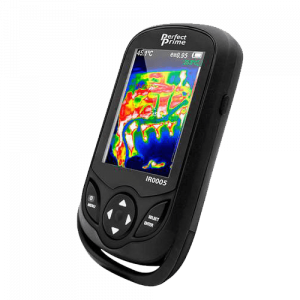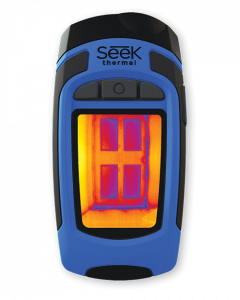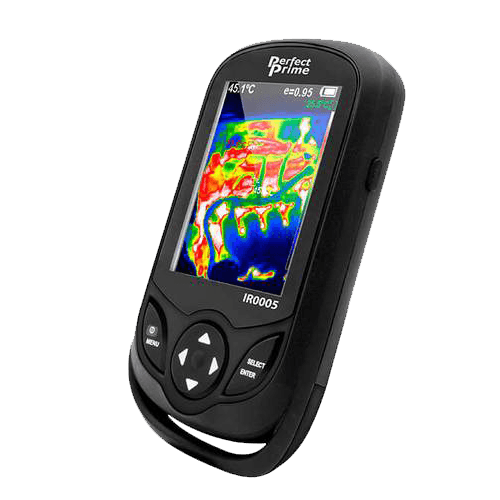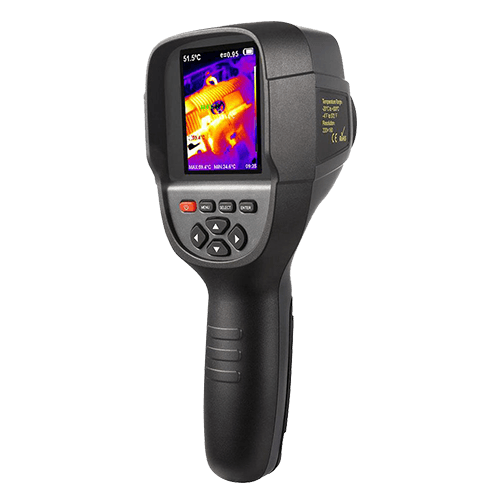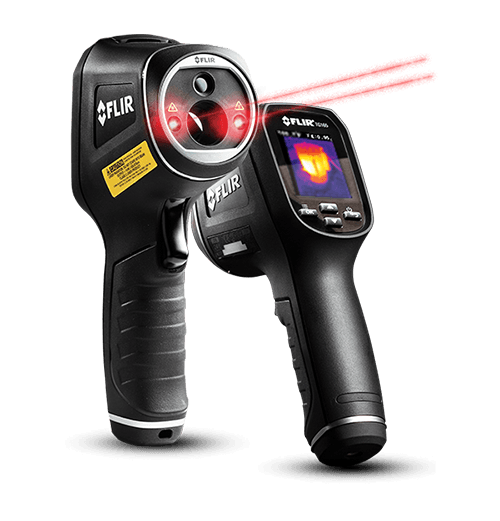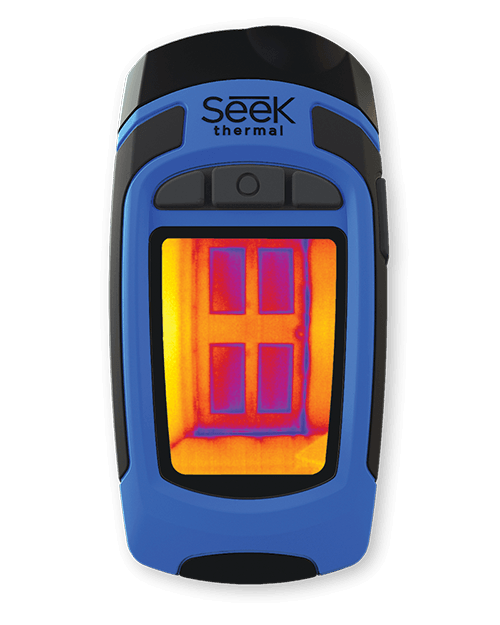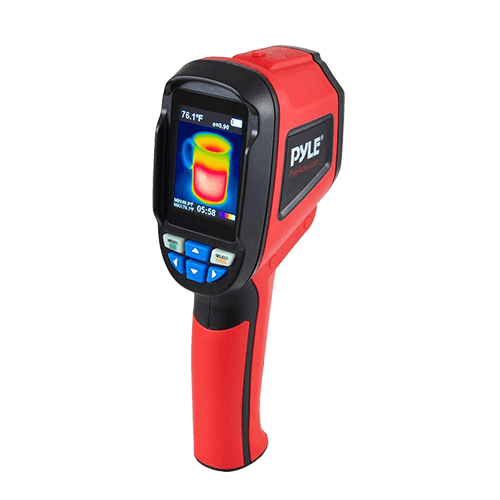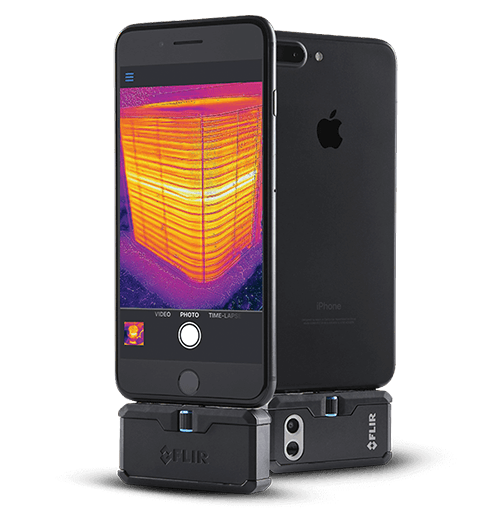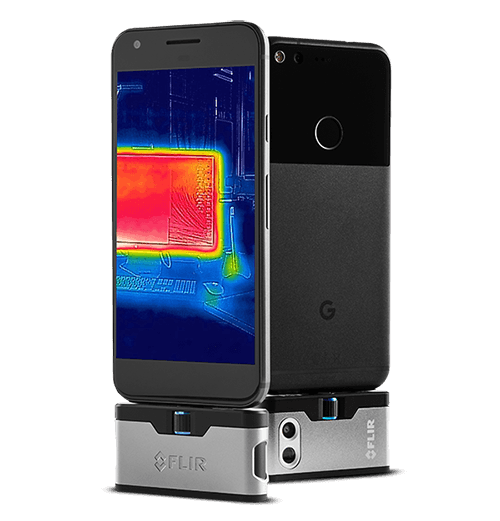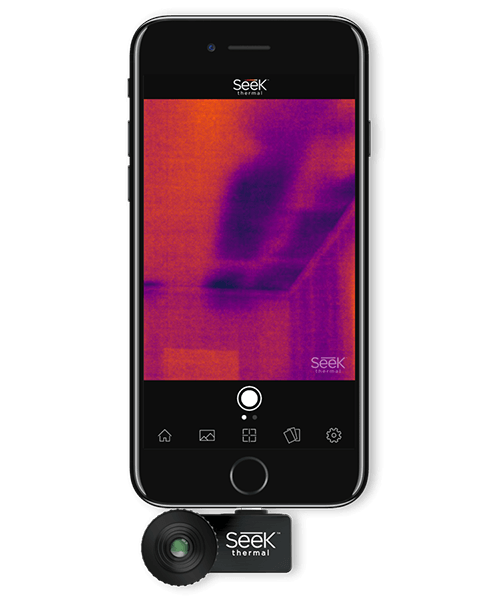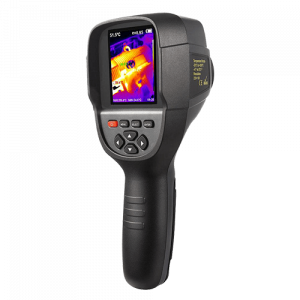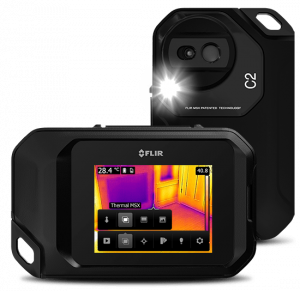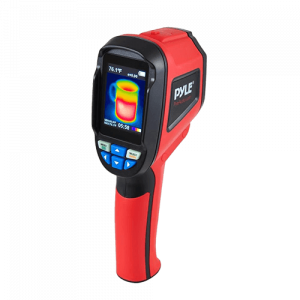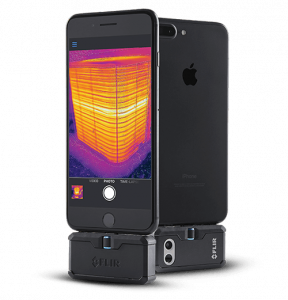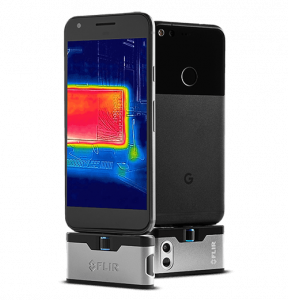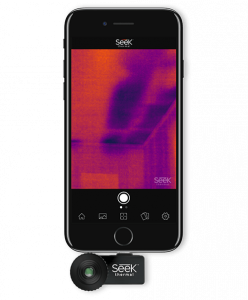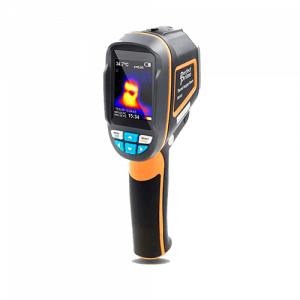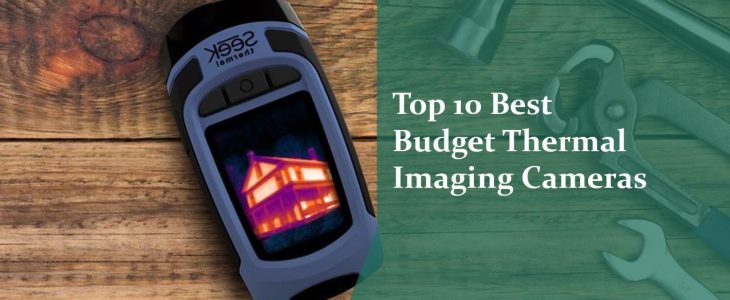
Night vision devices have a wide variety of uses in both residential and commercial applications. For the average homeowner, a thermal camera can help detect points of energy loss, such as poor weather stripping and leaking window seals. They can detect wiring issues behind walls, and identify potential maintenance issues due to overheating motors or fans.
Our Personal Best Choice
Just to get everything in one place, let’s take a look at our “best of” compilation, based on the price, ratings, features, specifications, and pros and cons of the reviewed thermal cameras:
Thermal cameras also bring value to many professional applications. They can be used for preventive and predictive maintenance, by looking for “hot spots” in wiring, fuses, motors, compressors, and a wide variety of electrical and mechanical instruments.
They also have value in search and rescue operations, with their ability to detect sources of heat in completely dark locations. This is especially valuable for police and firefighting operations.
Comparison Table
We’ve selected ten thermal imaging cameras from Amazon.com, and, in the course of this article, will be giving you an overview of them, and discussing features available which might influence your buying habits.
** – very limited number (under 100) of customer reviews for this product
How Thermal Imaging Cameras Work?
The initial development of the thermal imaging camera goes back to the 1920s, where an infrared-sensitive, or night vision, the camera was invented for a military application – giving the British a night the vision camera for anti-aircraft defenses. The US Military and Texas Instruments worked together in 1947 to develop infrared line scanners, which have military applications even today (Wikipedia.com).
Moving into the 1990s, the focus of infrared imagers moved toward civil applications, as improvements in the technology drove costs further and further downward. Major markets included environmental controls, medical diagnosis, and automobile guidance systems. However, because of their military applications and development, many models of thermal imaging cameras are still under export controls.
While a thermal imaging camera has many similarities to normal digital cameras, there are some key differences.
An ordinary camera will detect visible light. An infrared camera will detect infrared energy, emanating from a different part of the light spectrum. As temperatures rise, objects will emit more infrared rays, captured as black body radiation.
This can be captured even in total darkness, which is why thermal imagers are so effective in rescue missions, such as from burning buildings where smoke would normally block visibility.
Buying Guide
To make an informed buying decision, it’s good to evaluate available features on thermal imaging cameras. Some will be standard on some cameras, optional on others. The same spec may have wide variation from camera to camera. The best way to decide what’s right for you is to look at each of these features, and grade it as either must have (camera would not be useful without it), nice to have (could live without it, but may make sense), or bells and whistles (features I’ll never use).
Specifications are drawn from either manufacturer’s data or the Amazon web site. Not all manufacturers will report the same specifications, so you may need to do further research to finalize your comparison of these models.
Best Budget Thermal Imaging Camera Reviews
Perfect Prime IR0005 – Best Professional Model
This is not the most expensive thermal imaging camera on the list, but it is one of the Cadillac models. It has one of the larger screens of all the models at 3.2”, and weighs in at only seven ounces. It’s heavy duty, and designed for the frequent use of the professional. It comes with a two-year warranty, which can be extended to three years simply by registering the purchase with the manufacturer.
Pros
- a lot of features and capabilities for the price
- thermal sensitivity is 07oC
- 3” touch screen gives plenty of visibility and detail for the user
- comes with rechargeable batteries, lanyard, charger, and USB cable
Cons
- operating temperature range is not as wide as some other models. Might result in some restrictions to use.
- limited number of customer reviews, so even with a high rating, detailed inspection and review should be conducted
HTI Thermal Imager – Runner-Up Best Professional
Similar to the IR0005, this unit has a 3.2” color screen with the same 35000 pixels display. It also has a two-year warranty, and comes with lifetime technical support. Geared for the working professional, the camera is in a “gun” shape for improved ergonomics.
HTI Thermal Imager
Features and specifications:
- five different color palettes to choose from for viewing display
- built-in 3 GB storage capability
- 35200-pixels display, measuring accuracy +/- 2.5%
- operating temperature 0oC – 50oC
- rechargeable lithium-ion battery with listed life of up to 5000 hours
Pros
- thermal sensitivity .07oC
- automatic power-off time selectable from 5 – 20 minutes of non-use
- lanyard, case, USB cable, battery included
Cons
- slightly better operating range than the IR0005, but still may drive some restrictions
- limited number of customer reviews, so even with a high rating, detailed inspection and review should be conducted
- some complaints in reviews relative to China-based customer service and support
Flir TG165 Spot Thermal Imager – Best Homeowner’s Model
This unit falls just below $300, but also falling with it are some features. The screen pixels are 80×60 resolution, compared to 640 x 480 in the first two units. For the home user, this should be sufficient, but might not be enough detail for the professional. Other specifications (see below) are similar or better than the first two units.
Pros
- decent 4.1 rating, under $300 price makes it attractive to the homeowner
- passes a 2-meter drop test, 2- year parts and labor warranty, 10-year thermal detector warranty
- gun shaped for improved ergonomics
Cons
- some users experienced out of the box calibration issues around temperature, especially at lower temperatures
- batteries cannot be replaced; they are inside a sealed unit
Seek Thermal Reveal – Best All-Around Model
Screen pixels are 206×156, so this unit falls in between the TG165 and the Perfect Prime unit. It has a 2.4” display screen and comes with a built-in, 300 lumens flashlight, all at a weight of just over 6 ounces. Operating temperature ranges are not given in the specifications, but detection range is listed at 500 feet (obviously with limited screen detail).
Pros
- features and price are such that this unit could appeal to both homeowners and professionals
- built in flashlight is a nice extra not included in other units
- seven color palette options available for viewing
Cons
- several reviews report unit as inoperable right out of the box
- concerns also reported about device temperature reading calibration
Flir C2 Compact Thermal Camera
The unit is truly compact at only 4.6 ounces, but still having a 3” touch screen with 80 x 60 pixels resolution. The operating temperature range is -10oC to 50oC, with the accuracy of +/- 2oC. The unit comes with lanyard, battery, charger, and USB cable. A 41o field of view is among the best in this list.
Flir C2 Compact Thermal Camera
Features and specifications:
- thermal measurements are captured from 14oF to 302oF, which is a fairly tight range, with an accuracy of +/-2%
- “Professional level” reporting software is included with the unit
- moisture pen, voltage pen, and case available as options
- highest priced camera on this list
Pros
- wide field of view gives the user a substantial screen with reasonable clarity, based on the pixels and display screen
- reporting software is a nice option, offering standardized reporting to support your IR photos taken
- lightweight for easy transport and use
Cons
- fairly limited range of thermal measurement, topping out at about 300oF, where the HTI Thermal Imager goes to almost 600oF
- highest price camera on the list, but still several complaints about the overall quality and operation of the unit
Pyle Infrared Thermal Camera – Runner-Up Best Homeowner’s
This camera has a large, 4” digital display screen, but with only 3600 pixels resolution. Four different selectable color palettes and an ability to switch from Centigrade to Fahrenheit scales are standard. This unit is the first to drop below a 4.0 rating at 3.9, but the price is relatively in line with that type of rating; in other words, nothing exceptional in price or features.
Pros
- the unit has the ability to preview and delete images on the display screen
- introduces a new potential use – checking food temperature safety
Cons
- no warranty information available. Warranties may be purchased through Amazon at additional cost
- only five reviews on this product, so potential purchasers should investigate the unit fully rather than rely solely on the ratings
Flir One Pro LT
The One Pro represents a different approach from most of the other imagers on this list, as this one is a camera attachment, designed for use with your iOS phone. Many of the specifications, therefore, are not listed separately but are controlled by your phone. This would include pixels resolution, screen size, memory capability, etc. Given the small size and weight, and since virtually everyone carries a phone, it might be a nice tool for the contractor with an occasional need for an imager.
Pros
- A nice setup for a contractor occasionally needing a thermal device. Would not tie up a lot of room in the toolbox, and not huge cost investment
- passes a 1.8-meter drop test, comes with installed reporting app
Cons
- not warmly received by reviewers at a 3.8 rating, and 15% of reviews at one star
- depending on the configuration, you may need to remove the protective cover from your phone or tablet to install the imager
Flir One Thermal Imaging
This unit, like the One Pro, is a camera attachment, with configurations available for use with both iOS and Android phones, each priced the same. While the cost is much lower than the One Pro, there is also a drop off in functionality. Operating ranges are very tight, and only just over 40% of users give this unit a five-star review.
Flir One Thermal Imaging
Features and specifications:
- very small unit (2.7 x .6 x 1.4 inches, 2 ounces) can be kept virtually anywhere. Simply clip to your phone when needed
- warranty is not specifically noted, but most likely the same at one year
- same object temperature range as the Pro model, usable in temperatures of 32oF – 95oF
Pros
- the fairly low price makes it suitable for household use, and possible light use by contractors
- the software app is included with the unit for printing, reporting, filing, etc.
Cons
- like the Pro model, low overall rating, and 16% of ratings were one star
- rated for one-hour battery life, but many complaints that it would not even last that long
Seek Thermal Compact Imager
One more of the camera attachment imagers, with this one specifically for Android technology. This one, however, has some specifications and ratings more in line with dedicated units. It will measure temperatures all the way up to over 600oF and has a 36o FOV. It has a similar quality rating as the Flir units, and a similar distribution of one- and five-star ratings.
Seek Thermal Compact Imager
Features and specifications:
- has video capabilities, subject to the memory capabilities of the phone
- price is right about in the middle of the two Flir units, likely making it attractive to both homeowners and casual use contractors
- does not require batteries or charging, and a free Seek mobile app is included
Pros
- better specs than the Flir units, price in between the two. Other similar Seek units are available, but not reviewed here
- software app gives contractors a tool for client presentations
Cons
- overall ratings are mediocre
- complaints have been raised about responsiveness to Android updates and unit functionality failing
Perfect Prime IR0002
At least in principle, this model is the little brother of the IR0005. It has 3600 pixels compared to almost 36000 on the IR0005, with 60 x 60 resolution against 220 x 160 on the big boy, but otherwise, the features are very, very close to each other. Operating ranges are the same, and this model has a 4 GB removable SD card and AA batteries, but this model is also almost half the price.
Pros
- almost all the features of units that are double the price
- a mid-range unit, suitable for either the homeowner or a general contractor
Cons
- the lowest rating of the ten we have reviewed here, although only 28 reviews to date. Might be worth waiting for further input before pulling the trigger
FAQ
Conclusion
If you are considering purchasing a thermal camera anytime soon, hopefully, this will give you some tips on selecting the unit that’s exactly right for you and your application. The commercial technology around thermal imaging is only a couple of decades old, and still in a state of flux. Advancements in personal security and automotive applications for self-driving cars will enhance features while driving down costs. Be aware of these advances, as today’s hi-tech may well be tomorrow’s garage sale item.

